
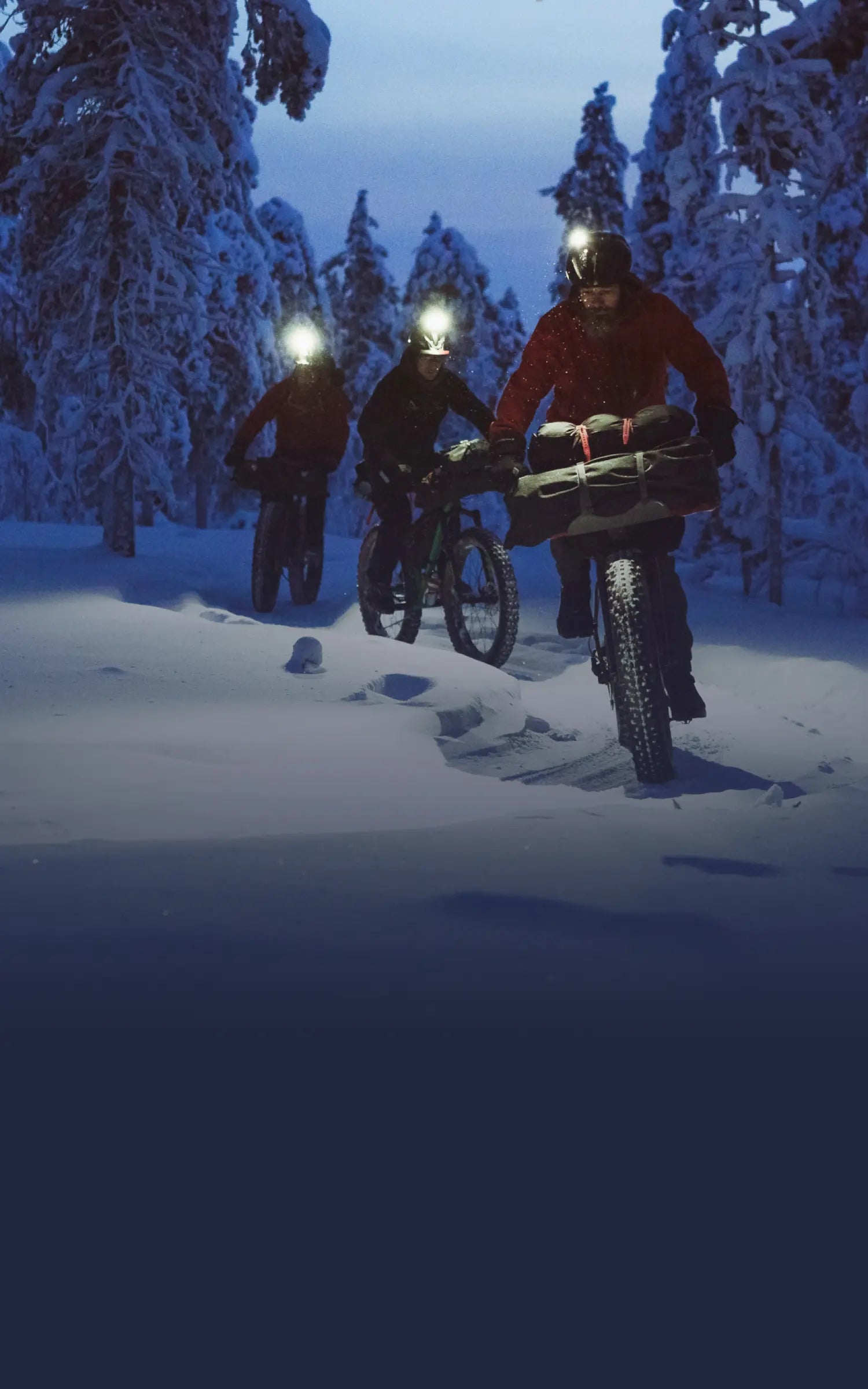
Suunto Blog
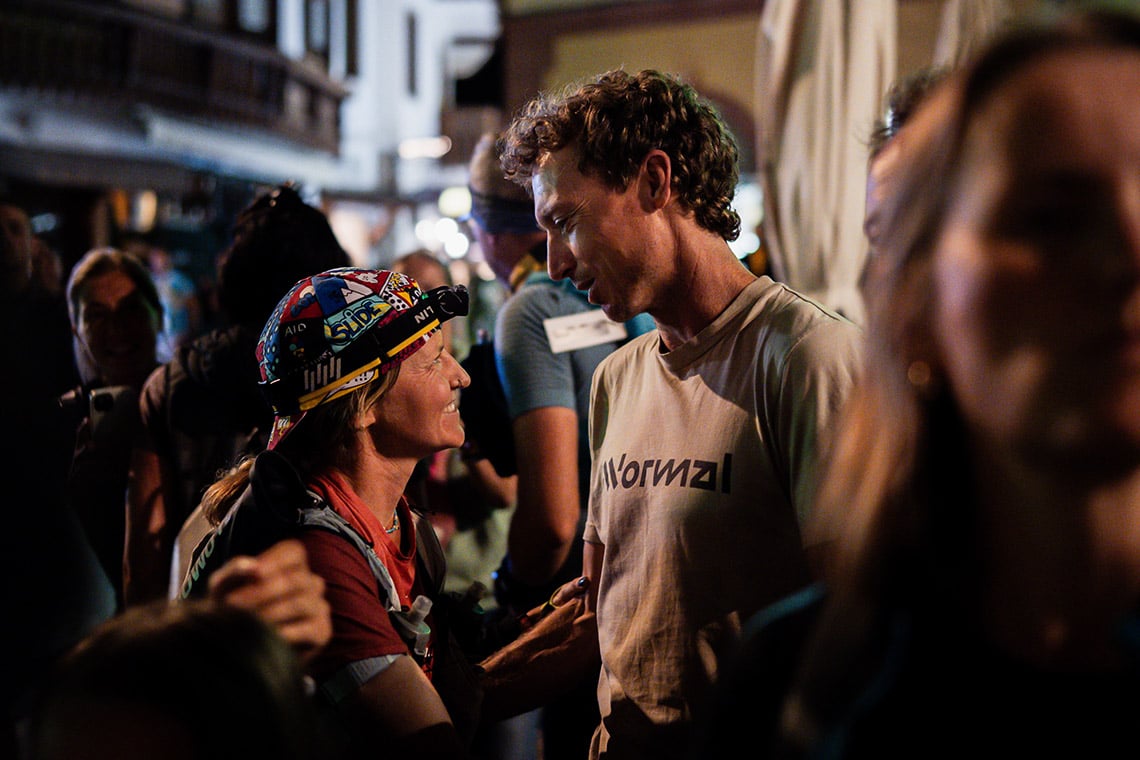
Martina Valmassoi & Dakota Jones swap roles in Crewing
In ultra running, the crew is often the unsung hero. Crewing tells the story of Martina Valmassoi and Dakota Jones as they switch roles between athlete and supporter across two demanding races.
Through La Sportiva Lavaredo Ultra Trail by UTMB in Italy and HOKA Val d'Aran by UTMB in the Pyrenees, Martina and Dakota experience both triumph and heartbreak. When Martina’s race in her home mountains takes an unexpected turn, Dakota is there to guide her through disappointment. Just a week later, the roles reverse as Martina helps Dakota push through doubt and exhaustion toward a hard-earned top-10 finish.
The film captures the resilience, trust, and deep connection that remind us: trail running is never just a solo sport. Along the way, you’ll also pick up insights into the art of crewing – valuable lessons you can bring into your own races or when supporting others.
Watch the full documentary below and experience the power of showing up for each other:

Community-powered pre-race tunes
Last week we asked you to share your favorite pre-race tunes. Here they are!
The opening track, Conquest of Paradise, needs no introduction to anyone who has stood on the UTMB start line. It’s the ultimate pre-race anthem.
From there, the playlist follows the rhythm of race day itself: calm and steady songs to carry you through the pre-start nerves, then uplifting beats and grooves to help you settle into pace.
As the kilometers add up, the music shifts into hard-hitting hip hop, gritty rock riffs, and big anthems to keep your legs turning. And finally, it all culminates in explosive finish-line bangers – the kind of tracks that make you sprint when you thought you had nothing left.
Several Suunto ambassadors suggested their own songs. Can you match these five athletes with their tracks?
Courtney Dauwalter
Toni McCann
Abby Hall
Ryan Montgomery
Dan Jones
How It’s Done
Get Up 10
Lose Yourself
Let’s Go Crazy
Into You
You can find the right answer in the comments of the original post!
Community-powered Pre-Race Playlist
Learn more about the new Suunto Wing 2 – the ultimate, open-ear headphones for running!

Running with music: How Kimi Schreiber and Gordon Clark find their flow
Some runners chase silence. Others chase the perfect beat. For Suunto athletes Kimi Schreiber and Gordon Clark, the right audio – whether it’s music, podcasts, or both – can turn a good run into something unforgettable.
Mood over miles
For Kimi, music is inseparable from running.
“I always run with music — in training and in competitions,” she says. “Every session, every run, and every day is unique. That’s exactly how I feel about choosing my music: it’s all about mood, not intensity.”
Her playlist changes depending on how she feels that day, but there’s one moment where it matters most — right before the start.
“That’s when I need music the most. It keeps my nerves in check and gives me that final boost of self-confidence. Without it, running wouldn’t feel the same for me.”
Kimi’s approach is deeply personal. Music isn’t just about beats per minute — it’s about emotional connection. She’s even named her running playlist Kimi’s Epics, a collection built to make her feel powerful from the first step.
Listen to Kimi’s Epics below!
Warming up the mind
Gordon’s relationship with audio on the run is more… eclectic.
“I’d reckon 90% of the time I’m running with headphones,” he says. “Only on long, remote trail sessions might I ditch them – partly to hear the sounds of nature, and partly so I’m not mauled by a mountain lion or bear.”
For the first miles of his runs, Gordon often listens to podcasts.
“It tunes the brain in and on,” he explains. “I’m warming up the body, doing a little self-assessment, then a light stretch before the main part of the run.”
Halfway through, though, the mood can shift.
“By then, some internal dialog is going hard. I need to hush that up and focus – open up the stride, play with speed. That’s when music comes in.”
While he doesn’t usually race with headphones, Gordon makes exceptions for big endurance challenges, like double marathons or extended marathon efforts. “In those types of runs, music helps me stay locked in – until I switch it off to feed off the crowd’s energy.
Listen to Gordon’s Run Mix below!
Their playlists
These aren’t just “top hits” — they’re personal soundtracks built for very specific moments in a run. Whether you’re looking for power, rhythm, or simply a fresh beat to get moving, Kimi and Gordon have you covered.
Kimi’s Epics
Gordon’s Run Mix
Add music to your performance
Suunto Wing 2 headphones bring open-ear sound to movement – combining powerful audio, real-time voice feedback, and LED safety lights in a lightweight, waterproof design. It’s made for athletes and adventures who want to stay motivated, aware, and in motion – no matter the conditions. Built on feedback from the first Wing, the new model improves endurance, and everyday usability.
Learn more about Suunto Wing 2 >>>
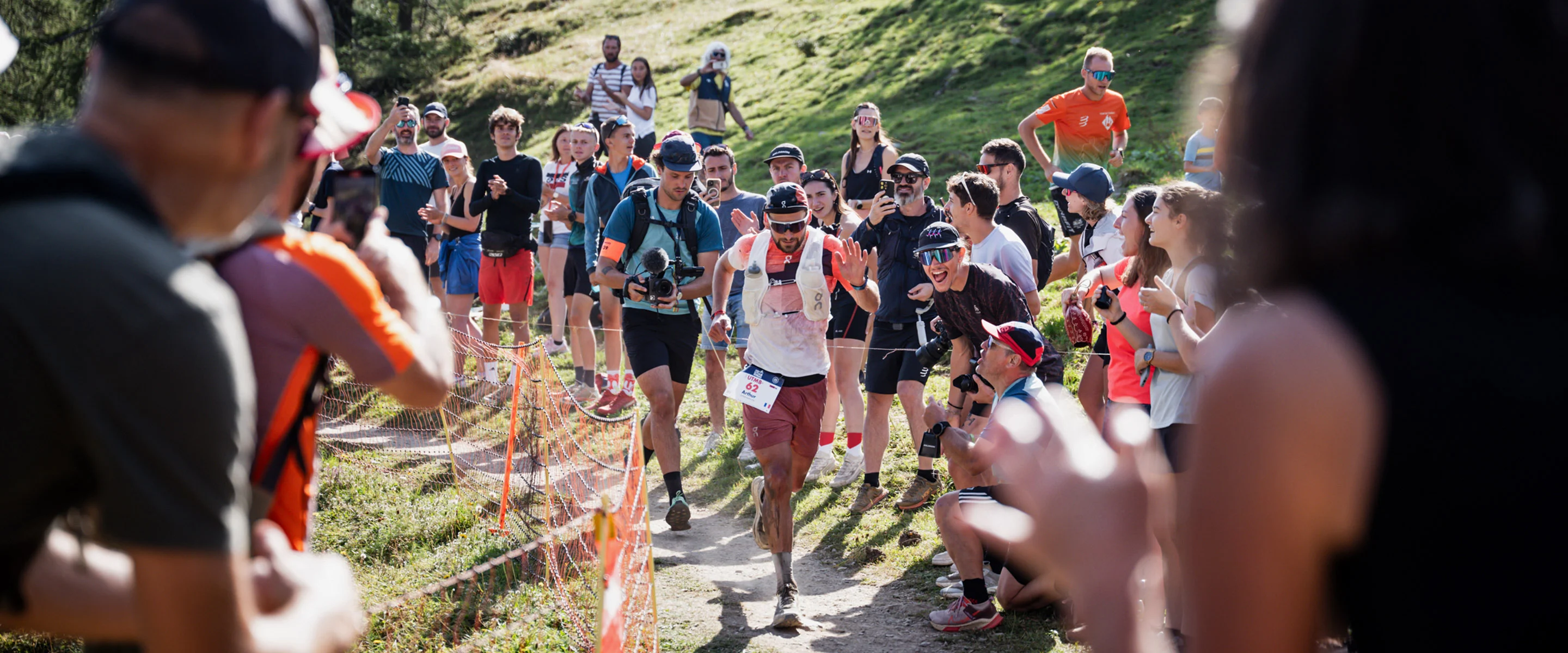
The best spectator spots at UTMB – Tips from Suunto athletes
UTMB week in Chamonix is one of the most electric moments in trail running. Whether you’re cheering for a friend, following the elites, or simply soaking up the atmosphere, being in the right spot makes the experience unforgettable.
Suunto athletes Stephanie Case and Elise Poncet share their top recommendations – from festive fan zones to quiet scenic viewpoints – to help you plan your UTMB adventure.
The legendary UTMB, a 174 km run around the Mont Blanc, starts in Chamonix on August 29 at 5:45pm.
St. Gervais – Kilometer 23 (Friday night)
The first major aid station of the UTMB – and this year it’s powered by Suunto. Expect a live DJ, a buzzing crowd, and an incredible atmosphere as runners make their way into the heart of the night. Join the Suunto crew to cheer athletes as they hit their first big checkpoint.
Notre Dame de la Gorge definitely is one of the most legendary spectator spots. (Image by The Adventure Bakery)
Notre Dame de la Gorge – Kilometer 37 (Friday night)
One of the most legendary UTMB viewing spots. Stephanie describes it as “a magical, somewhat chaotic light show” where bonfires, neon tunnels, and cheering crowds push runners toward Col du Bonhomme. Step back from the party for a moment and you’ll see a surreal sight: headlamps winding up the mountain like stars in motion.
Rifugio Bonatti – Kilometer 96 (Saturday morning)
For a calmer experience, Stephanie suggests heading to Rifugio Bonatti, which is not an aid station but rather a point along the course, with incredible views of the Grandes Jorasses. Here you can cheer while enjoying pasta, coffee, or even a beer in relative peace, far from the chaos of the big checkpoints.
Stephanie is a Chamonix-local who is commentating the UTMB live during the race week. (Image by Freetrail/Ryan Thrower)
Grand Col Ferret – Kilometer 106 (Saturday morning)
The highest point of the course at 2536 m is also one of the most dramatic. Stephanie calls it the place to “bring a cowbell, a flag, and your lungs” as runners struggle to the top of this iconic climb on the Italian–Swiss border.
Vallorcine – Kilometer 158 (Saturday morning)
Both Stephanie and Elise highlight Vallorcine as the place to be in 2025. A massive French fan zone will transform the village into a wild cheering party. Expect costumes, noisemakers, and nonstop encouragement as athletes tackle the last big valley crossing. Parking is tight, so take the train for the easiest and most eco-friendly access.
Elise lives in the Chamonix Valley and knows the mountains inside and out. (Image by The Adventure Bakery)
La Flégère – Kilometer 170 (Saturday afternoon to Sunday morning)
The last climb before Chamonix, and one of the most emotional places on the course. Elise calls it “incredible” with panoramic Mont Blanc views, while Stephanie notes you’ll see runners at their most raw – some breaking, some soaring, all of them on the edge of finishing UTMB. Reach it via the cable car from Les Praz (€24) or hike up from the valley with the Suunto crew: Come to the Suunto booth at 1pm on Saturday and join a cheering run up towards La Flégère.
Plan Your Experience
From the chaos of Notre Dame de la Gorge to the emotional final push at La Flégère, these spots capture the full spirit of UTMB: the atmosphere, the scenery, and the sheer grit of the runners. And if you’ve got time, exploring the valley’s trails will only deepen your appreciation of this iconic race.
As Stephanie puts it: “UTMB race week is one of the most exciting times to be in Chamonix valley, whether you are racing or not!”
Bonus: Trails for Visitors
If spectating isn’t enough and you want to explore Chamonix’s trails yourself, Stephanie recommends these memorable outings:
La Jonction – A steep, 1500 m climb starting from Les Bossons, with breathtaking views of the Bossons and Taconnaz glaciers.
Lac Blanc – A two-hour hike from the Flégère cable car with iconic views of Mont Blanc. Perfect for a lunch stop at the refuge.
Refuge de Bellachat & Brévent – A bigger day out from Chamonix with 1600 m of climbing, ridgeline views of the Mont Blanc massif, and the option to descend or take the cable car down.
READ ALSO: The adventure to follow the UTMB – Navigate to these 5 cool spectator spots
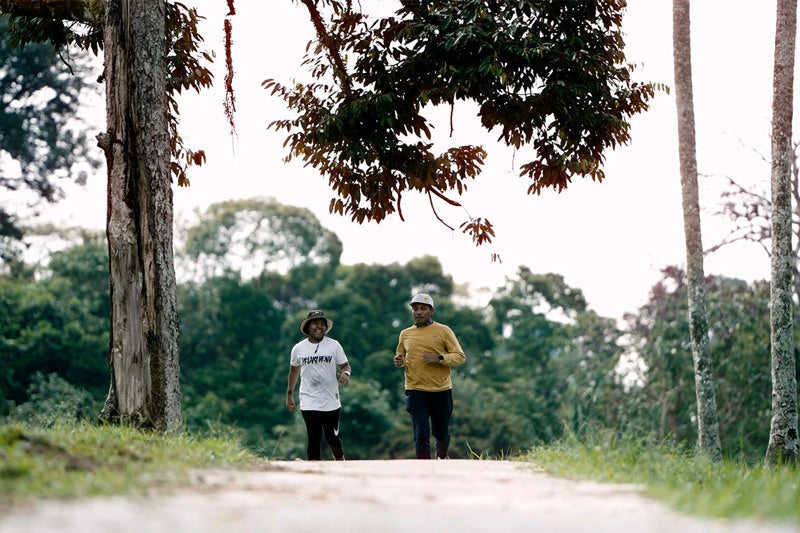
Hagia – Finding freedom through movement
Movement has the power to bring us closer — to ourselves, to each other, and to the world around us. For Hagia and her father, it’s not about racing or winning. It’s about sharing moments of freedom, connection, and understanding. This is their story.
Meet Hagia, a 12-year-old autistic girl who finds peace in motion. Running and swimming are not about competition — they’re her way of feeling free.
By her side is her father, Udey, who joins her in every step and stroke, using movement as a bridge into her world.
A story of love, freedom, and connection.
Watch the film now!
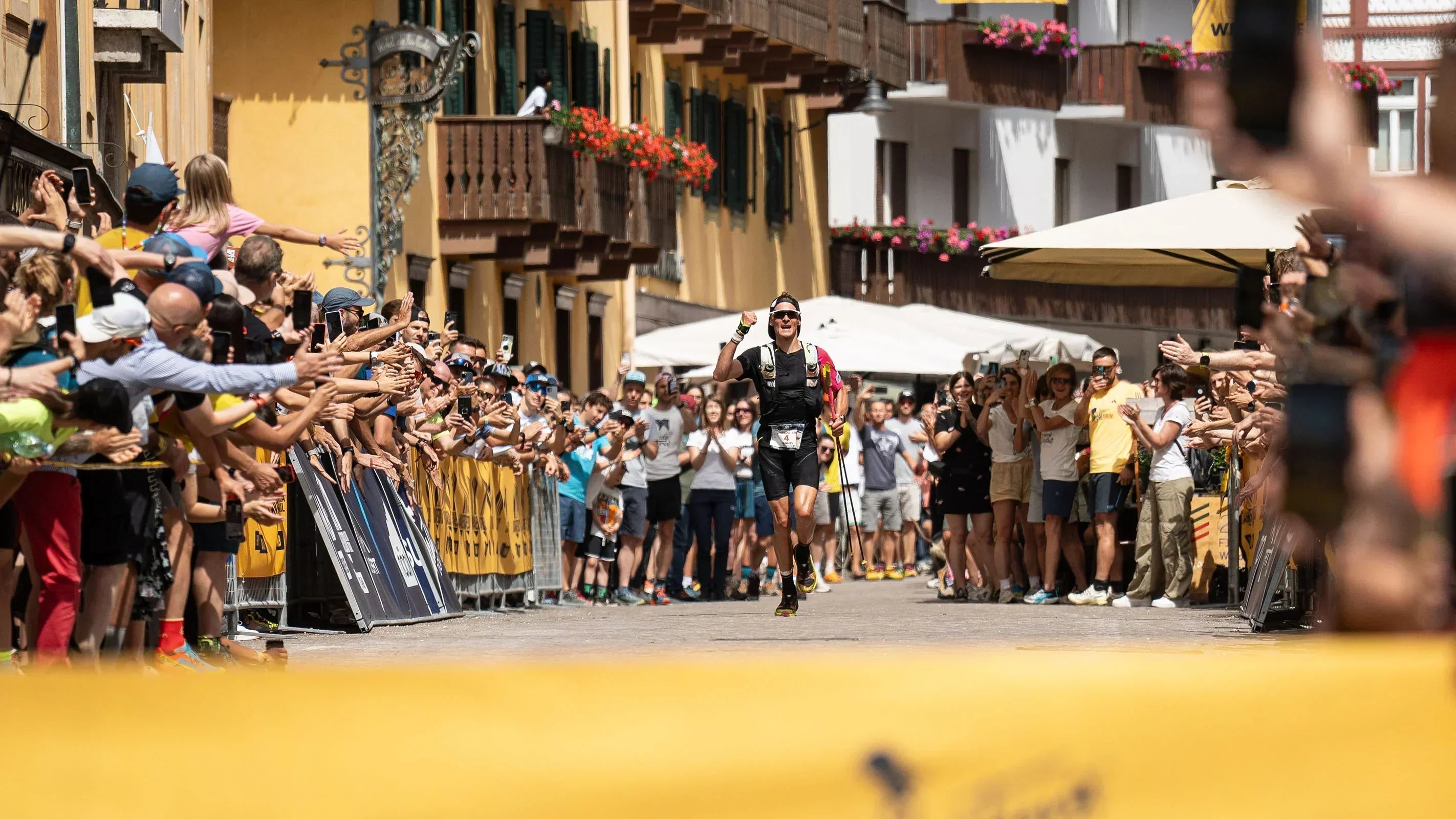
Lavaredo Ultra Trail by UTMB
We are ready - are you?
The 18th edition of the Lavaredo Ultra Trail by UTMB features a particularly challenging course, with a total distance of 120 km and 5,800 meters of elevation gain. The maximum race time is 30 hours, starting from Cortina.
Once again this year, all races are fully booked across the event.
Each day is dedicated to a different distance, creating a full schedule of daily events — with the exception of 27 June, when both the longest race (120 km) and the intermediate race (50 km) will take place:
25 June 2025: Lavaredo 10K – 10 km – elevation gain 200 m⁺
26 June 2025: Lavaredo 20K – 20 km – elevation gain 1,000 m⁺
27 June 2025: Lavaredo 50K – 50 km – elevation gain 2,600 m⁺
28 June 2025: Lavaredo 100K – 100 km – elevation gain 4,600 m⁺
27 June 2025: Lavaredo 120K – 120 km – elevation gain 5,800 m⁺
Many of our Suunto athletes are ready to give it their all:
Ugo Ferrari
Nadir Maguet
Florian Olivier
Claudia Tremps
Martina Valmassoi
Courtney Dauwalter
Alyssa Amos Clark
Katarzyna Wilk
Andreas Reiterer
Tony McCann
Suunto will be present in the village with a stand where our team will be happy to share the latest brand news and showcase our products.
But that's not all — take part in the HOP HOP RUN in collaboration with Näak and Buff. Experience the thrill of running 8 km through the beautiful Dolomites and try one of our sports watches during the run!
We look forward to seeing you on Friday, 27 June at 10:00 AM at the Suunto stand at the UTMB Expo / Ice Skating Stadium – Cortina.
👉 Register now and book your unique opportunity to test one of our sportwatches during the run!
Register










































































